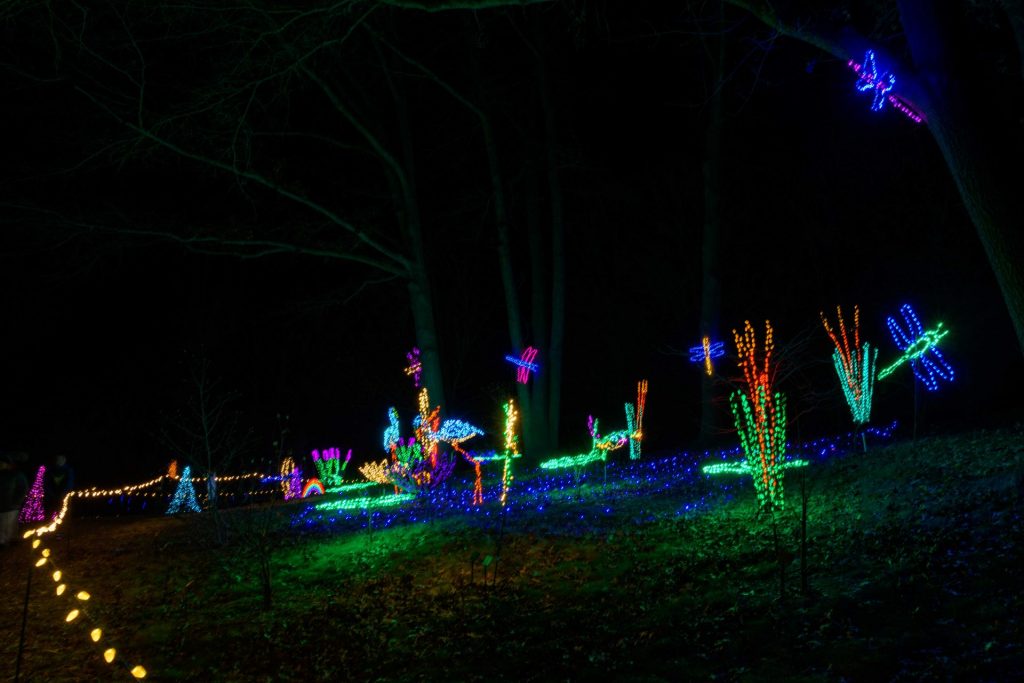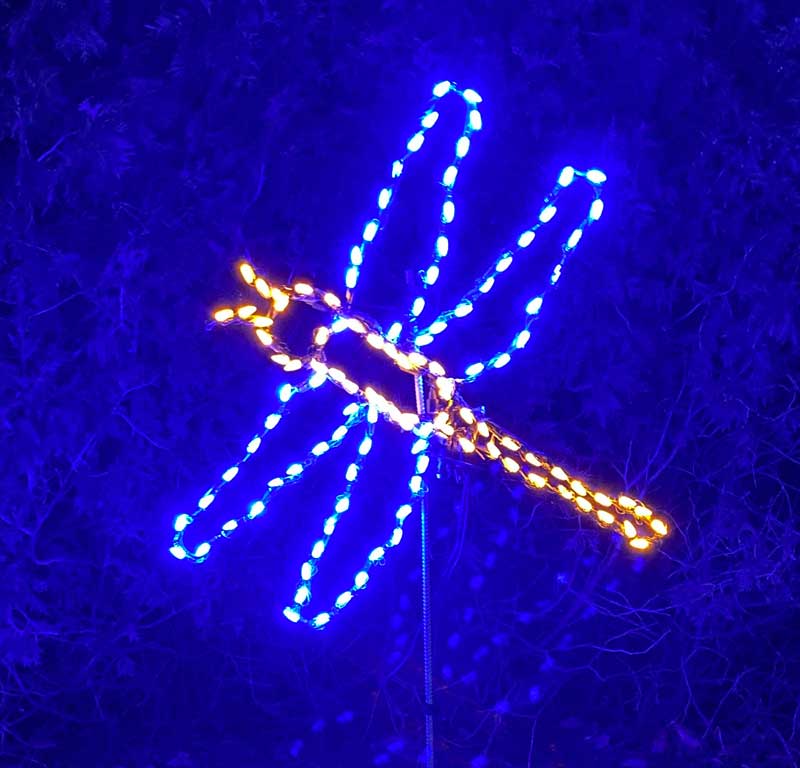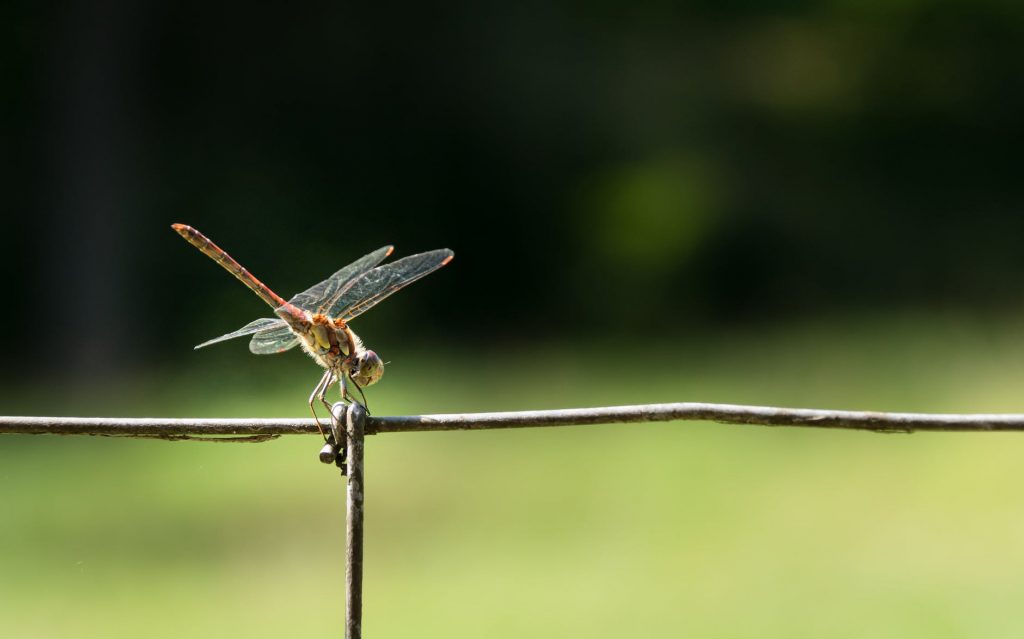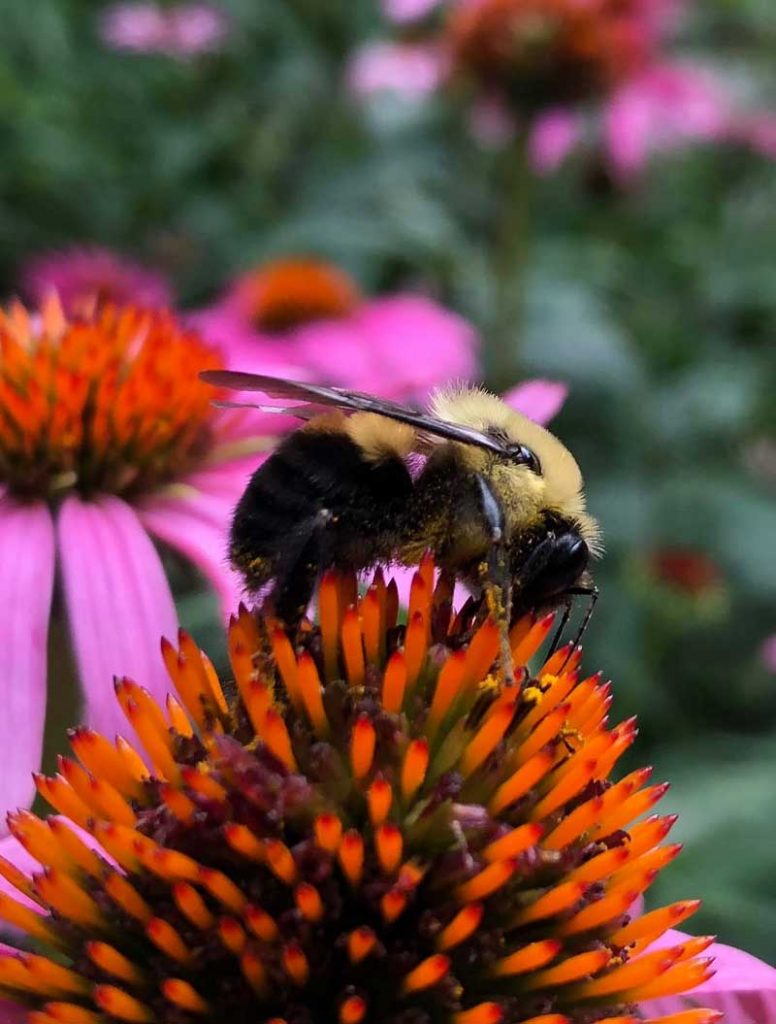As you explore the wintry outdoors and see a dazzling 325,000 holiday lights during WPS Garden of Lights, you’ll likely notice that we have a botanical and nature-inspired theme, and this is no coincidence!
Each and every one of our hand-crafted displays represent an element of nature in some way, from buzzing bees to spinning spiders and many more flora and fauna found in Wisconsin.
Ever wonder where some of the plants and animals in our local ecosystem live? Next year, the Garden will welcome Habitat, an exhibition that explores the critical need for varied habitats, how interconnected and fragile they are, and what we can do to protect them.
In this three-part series, we’ll highlight just where you can find some of these critters and how other organisms actually act as habitats for their fellow creatures.
Here are just a few of the beneficial insects and pollinators (featured somewhere in our light show!) that call Wisconsin home and where you typically can find them in nature:

Dragonflies
Dragonflies can be found on every continent except Antarctica. Mostly found around freshwater areas, dragonflies are associated mainly with wetland habitats such as ponds, lakes, rivers, bogs, and marshes.
Typically thriving in more mild climates, these winged creatures actually appear less and less the further north you go. The most northerly species of dragonflies is the treeline emerald, found in Northern Alaska. They are most abundant and diverse in slow-moving freshwater that has no fish (small streams and ponds) but can be found in many shallow freshwater habitats. Adult dragonflies often stay near water, but sometimes travel away from water while hunting or migrating. They are fast fliers, so they tend to hunt in open areas, not in thick trees or other vegetation. Dragonflies are also commonly found under rocks and wood.

PC: Discover Green Bay
Dragonflies as a group occupy a considerable variety of habitats, but many species and some families have their own specific environmental requirements. Some species prefer flowing waters, while others prefer standing water. For example, the Gomphidae, commonly known as club-tails, live in running water, while the Libellulidae (skimmers) live in still water.
Some species live in temporary water pools and are capable of tolerating changes in water level and the resulting variations in temperature, but some dragonflies such as Sympetrum, commonly known as darters, have eggs that can resist drought and are stimulated to grow rapidly in warm, shallow pools.

Vegetation, including varieties that are submerged, floating, emergent, or waterside, is also important. Adults may require emergent or waterside plants to use as perches; others may need specific submerged or floating plants on which to lay eggs.
Caterpillars & Butterflies
Caterpillars mostly prefer to live in plants. Most caterpillars have their favorite host plants they call home, such as a particular tree, grass, or even stinging nettles. Butterflies or moths lay their eggs on host plants so that when the eggs hatch to become caterpillars, their food source is right there to nibble on.

While caterpillars live on their host plant, they basically never leave. They eat and rest in cycles, and shed their skin when the skin they’re in gets too tight. Sometimes they come down to earth to prowl around for a good place to make a cocoon, and that’s where most people find them!
Caterpillar’s preferred habitat is typically in areas with grass, flowers, leaves, trees, and plants where the butterfly lays their eggs. They also hide in piles of decaying leaves and on tree bark. Monarch caterpillars also love milkweed. They tend to stay on the host plant as long as they get enough food to grow into a butterfly or moth.

PC: John Oates Photography
As for butterflies, they can be found all over the world! From tropical forests, to deserts, to grasslands, and even tundras, butterflies thrive in all sorts of habitats. In fact, they live on every continent except Antarctica. Because they are cold-blooded creatures and typically need warm weather to survive, you are more likely to find them living in warm and tropical climates. You will certainly see many butterflies in areas that stay warm for all or most of the year, like California or Mexico.

Of course, butterflies need access to food, which is usually nectar from flowers for them, so they must live in places where there are blossoming flowers. Butterflies are also found in mountain ranges, salt marshes, along coastlines, and even near sand dunes.
Many butterflies live all their lives in a small area, but some migrate, often because of the weather changes and the need for warm temperatures and access to food.

PC: John Oates Photography
The most famous migrating butterfly is probably the Monarch butterfly. Monarchs from the Eastern and Northeastern United States are part of a migration that covers more than 2,000 miles and takes place over several generations of butterflies. They roost, or rest, for the winter in Mexico, clustering together to stay warm.
Bees
There are over 20,000 bee species worldwide, including the honey bee, which originated in Eurasia and has been imported around the globe as a domesticated species. Wild bee species live on every continent except Antarctica. In North America, there are approximately 4,000 native bee species occupying ecosystems from forests to deserts to grasslands.
Bees live in a wide variety of places, and some species are surprisingly adaptable. While they may construct a nest from scratch, they also make use of man-made structures, whether those spots were deliberately intended to provide homes for bees or not.

PC: C Gleason
Generally speaking though, most bee species make use of aerial crevices, holes, or caverns in various locations, while others may nest underground.
Bumble bees live underground most often, usually in abandoned rodent holes or crevices caused by tree roots. Carder bumble bees nest in crevices of trees, holes in walls, or other ‘mini-caves’. As such, many will happily make use of manmade cavities, such as bird houses, compost heaps, or loft spaces.
In the wild, honey bees make their nests in large cavities, usually hollow tree trunks or even in caves. Honey bees tend to live inside the same tree trunk and occupy it for several years, although the colony members will have changed. Honey bees will also make use of chimneys and man-made bee hives.

PC: Chad Krause
There are thousands of solitary bee species as well, and their nests tend to fall into a couple general types. For one, tunnels are created underground and burrowed by the female bee. Alternatively, tunnels can be created above ground, perhaps in wooden structures, or chewed into walls. Carpenter bees can even make nest tunnels and chambers by chewing through planks of wood!
Spiders
Most people don’t like the idea of living alongside spiders, but the only place in the world where you won’t find any eight-legged neighbors is Antarctica. Before you pack your bags and start looking for an igloo, remember that most spiders are harmless, though there are some dangerous types of spiders to be aware of. They actually do you a big favor by eating other bugs and insects that may cause more serious problems.

PC: Discover Green Bay
Spider habitats range from deserts to rainforests to backyards and everything in between. There are spiders that float on the water (fishing spiders), those that live under the water (diving bell spiders), and even spiders that live as parasites on the webs of other spiders. Some kinds of spiders build a clever “trapdoor” to ambush prey, some build shared webs to snare victims, and some even keep a web handy to throw as a net over an unsuspecting fly! Some spiders are indoor spiders and others thrive outside. Regardless of where a spider lives or what kind it is, its basic needs are the same: food, water, and shelter.
House spiders like living in quiet, undisturbed areas where moisture and food are available. Of course, food for spiders means other bugs. Spiders do not need much water, but moisture often attracts other bugs, so spiders will usually choose to live nearby as well. Cluttered areas provide more hiding spots for spiders. That’s why basements, garages, storage spaces, and wooded areas tend to be popular among the eight-legged crowd.

Although spiders generally like quiet areas with little traffic, they will opt for a busier location if that’s where their prey is found. If a house spider can avoid people, it will usually live for 1-2 years while some species of spiders can live much longer.
The pattern with beneficial insects and pollinators is their ability to live in a variety of places. Unfortunately, the benefits they serve our planet are not always recognized. Even when they are, it’s not always easy to consider the importance of sustaining their habitats in our day-to-day lives.
Plants, animals, and other organisms have adapted to each other and their habitats over time, creating a delicate ecological balance. This balance faces many threats, including pollution, deforestation, and climate change, but humans can protect habitats for the future by learning to be better stewards of the environment.
Next April, Habitat will showcase these unique habitats throughout the gardens and landscapes of Green Bay Botanical Garden and of northeast Wisconsin. Save the date and learn more on our Habitat web page.
Habitat was developed by Smithsonian Gardens and is made available by the Smithsonian Institution Traveling Exhibition Service.





